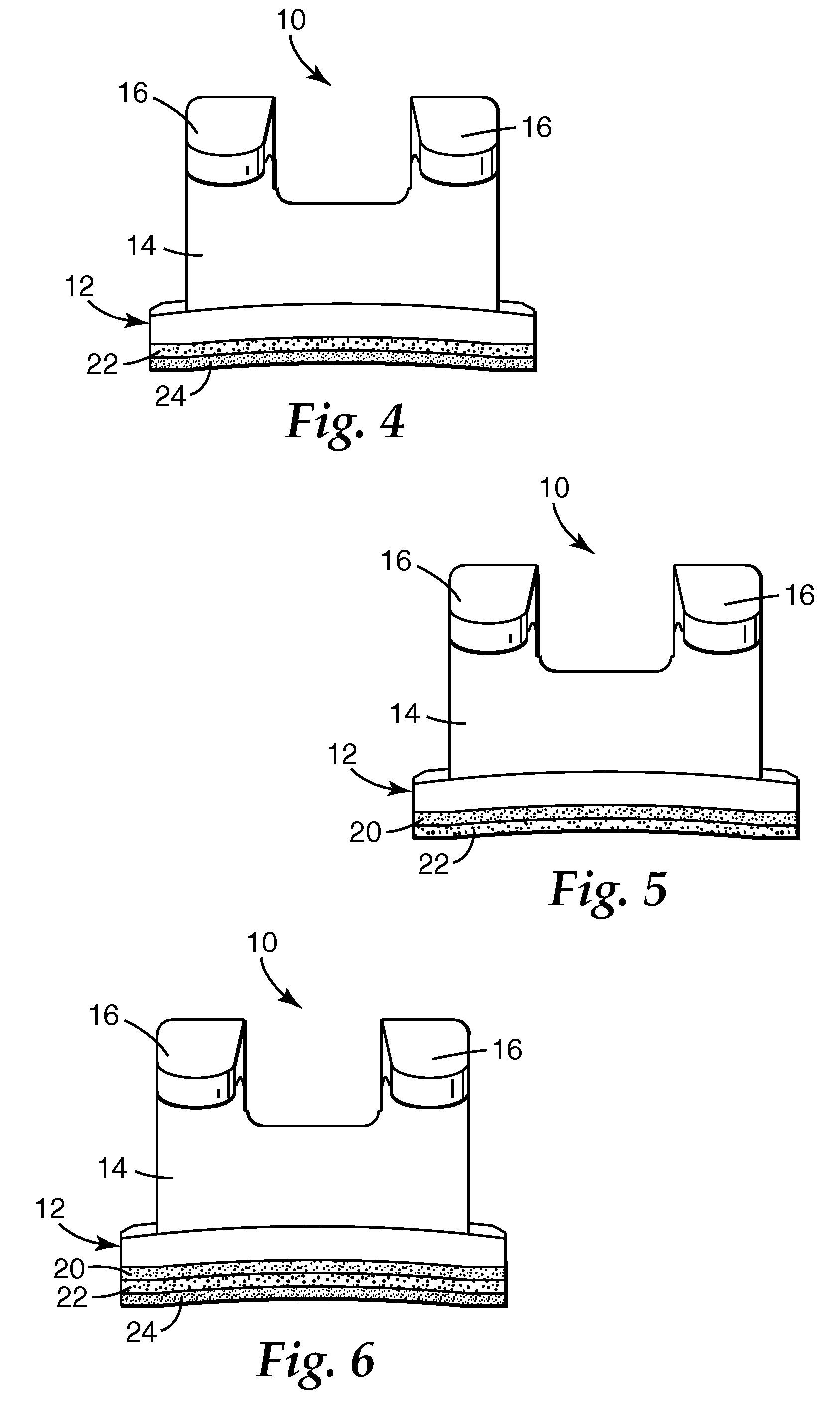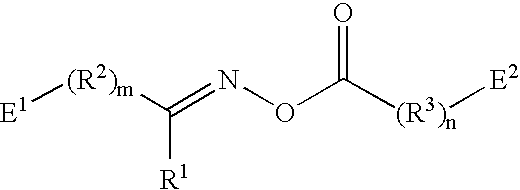Dental compositions including a thermally labile component, and the use thereof
a technology of dental compositions and components, applied in dentistry, teeth capping, prosthesis, etc., can solve the problems of cohesive failure and adhesion failure of hardened dental compositions, and achieve the effects of reducing the bond strength of orthodontic appliances, sufficient bond strength, and reducing the bond strength
- Summary
- Abstract
- Description
- Claims
- Application Information
AI Technical Summary
Benefits of technology
Problems solved by technology
Method used
Image
Examples
example 1
[0200]
[0201] The compound OX-1 DMA (Example 1) was prepared by the synthetic route detailed in Example 2 of U.S. Pat. No. 6,652,970 (Everaerts et al).
example 2
[0202]
[0203] A solution consisting of 22.1 gm of 1,1-(4,4′-methylenebiphenylene)bismaleimide (Sigma-Aldrich) and 48 gm of furfuryl alcohol (Sigma-Aldrich) was prepared in 150-200 ml of methylene chloride. The solution was refluxed overnight and then allowed to cool to room temperature. Enough diethyl ether was added to the product mixture to precipitate out the product. The precipitate was collected by vacuum filtration, redissolved in methylene chloride and reprecipitated in diethyl ether for an additional 1-2 times to purify it some more. Finally the precipitated material was collected by vacuum filtration, dried under vacuum and then allowed to further air-dry overnight. The identity of product DIOL-10 (Example 2) was confirmed by NMR spectroscopy.
example 3
[0204]
[0205] The compound DIOL-10 DMA (Example 3) was prepared by the synthetic procedure of Example 2, except that furfuryl methacrylate (Sigma-Aldrich) was used instead of furfuryl alcohol.
PUM
| Property | Measurement | Unit |
|---|---|---|
| temperature | aaaaa | aaaaa |
| bond strength | aaaaa | aaaaa |
| temperature | aaaaa | aaaaa |
Abstract
Description
Claims
Application Information
 Login to View More
Login to View More - R&D
- Intellectual Property
- Life Sciences
- Materials
- Tech Scout
- Unparalleled Data Quality
- Higher Quality Content
- 60% Fewer Hallucinations
Browse by: Latest US Patents, China's latest patents, Technical Efficacy Thesaurus, Application Domain, Technology Topic, Popular Technical Reports.
© 2025 PatSnap. All rights reserved.Legal|Privacy policy|Modern Slavery Act Transparency Statement|Sitemap|About US| Contact US: help@patsnap.com



